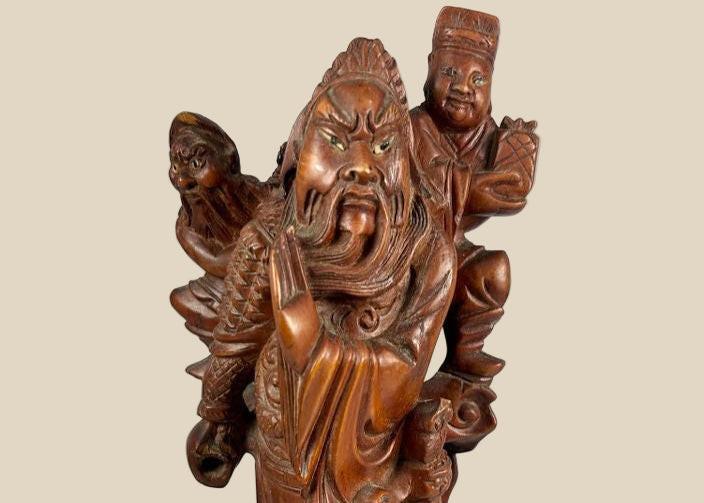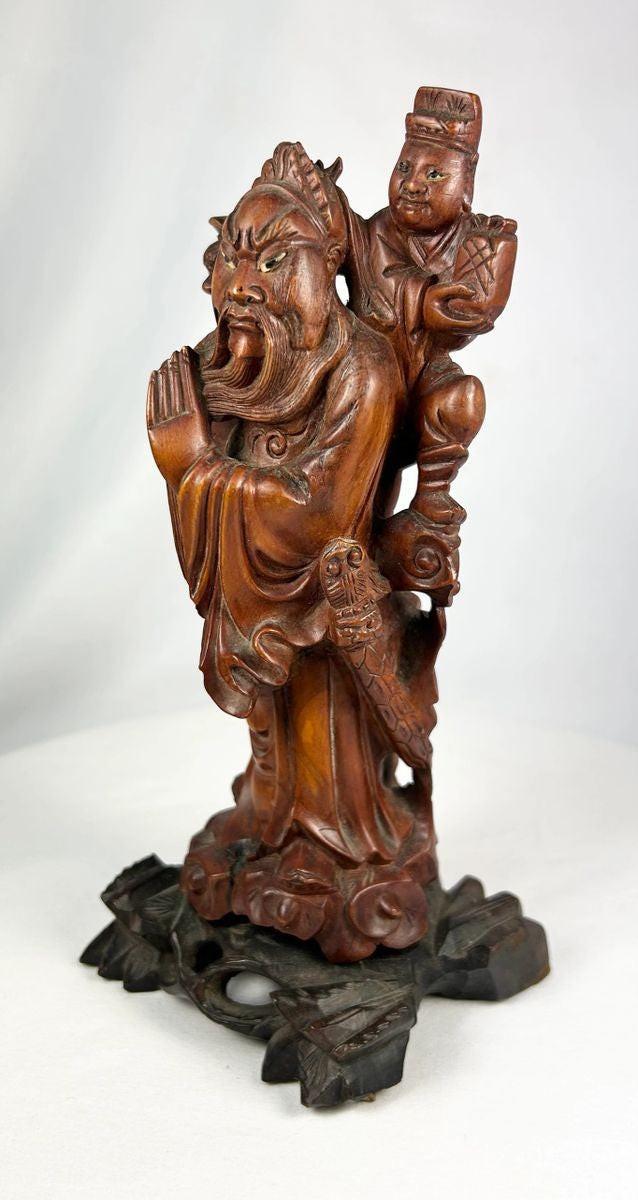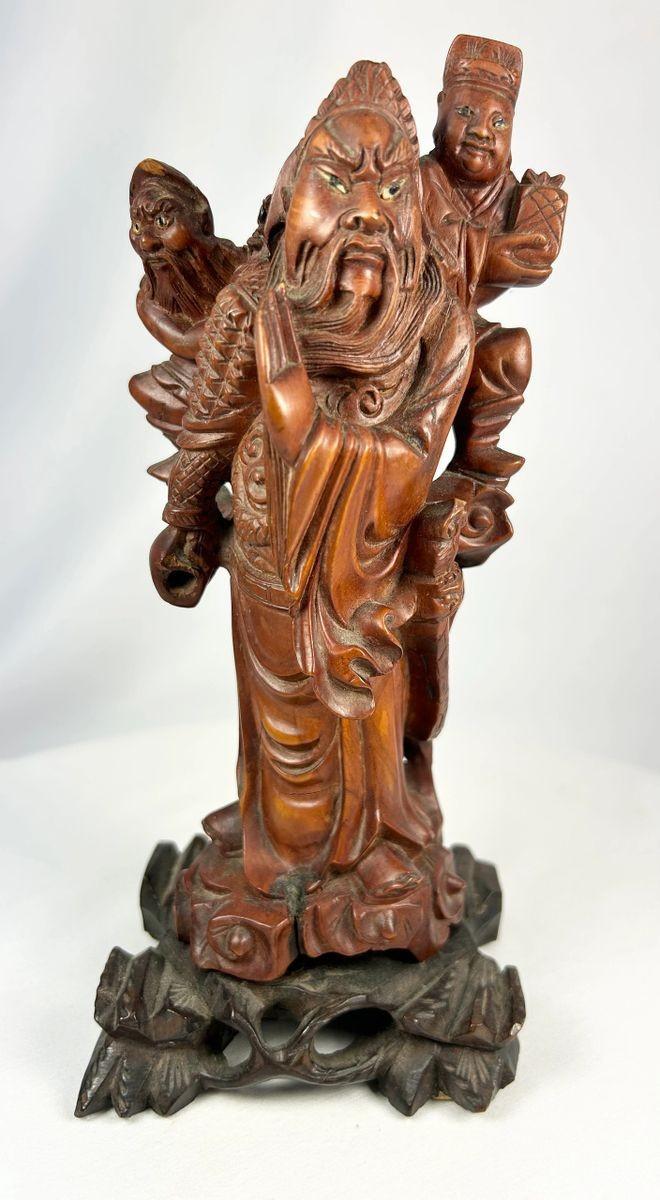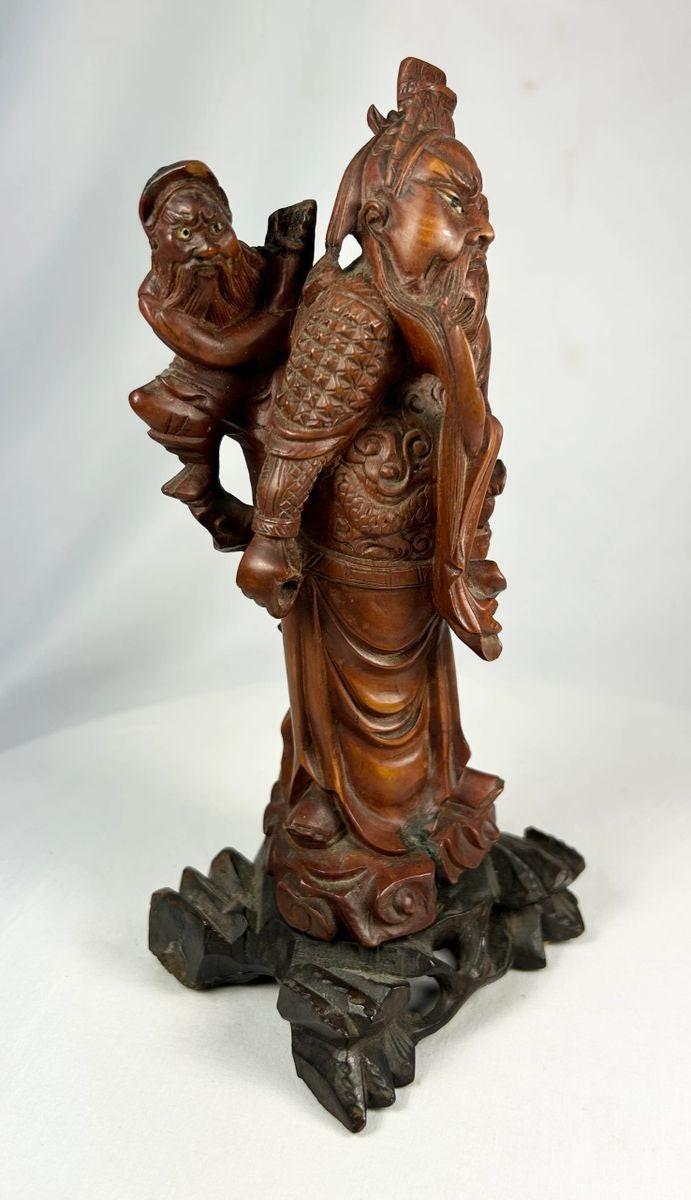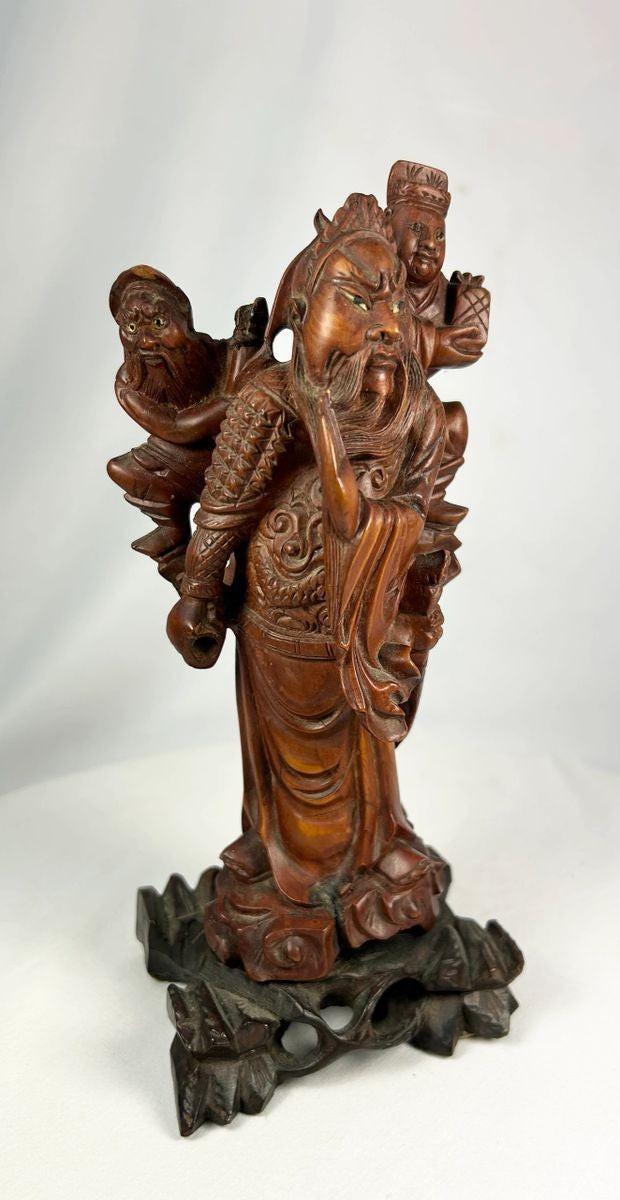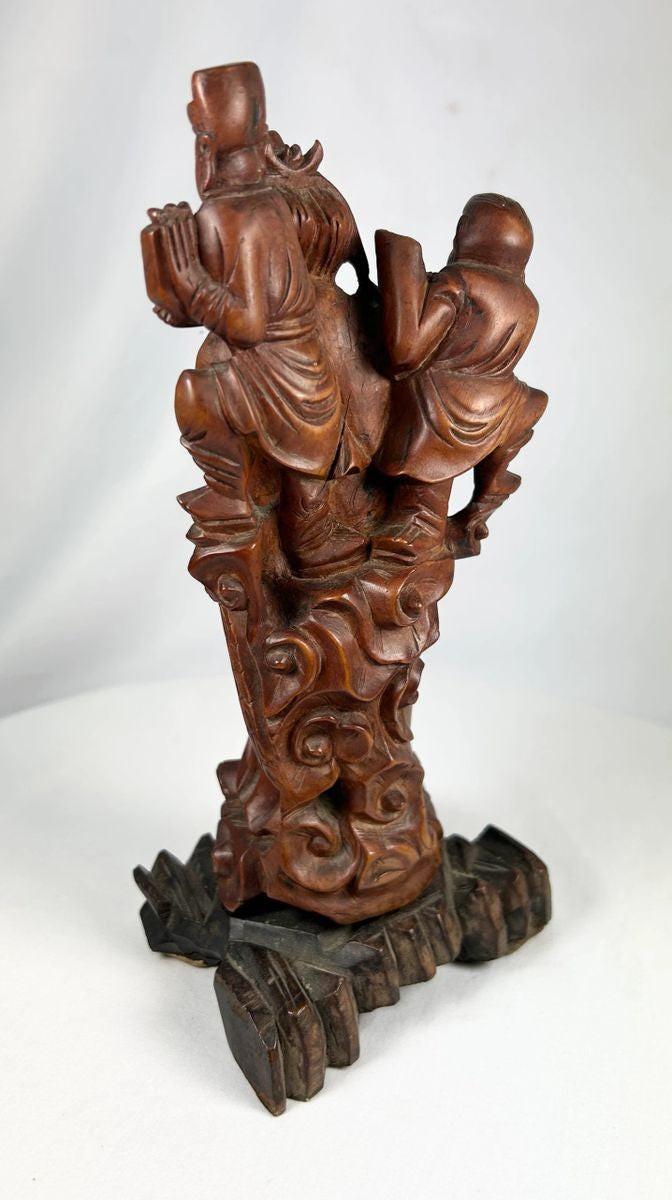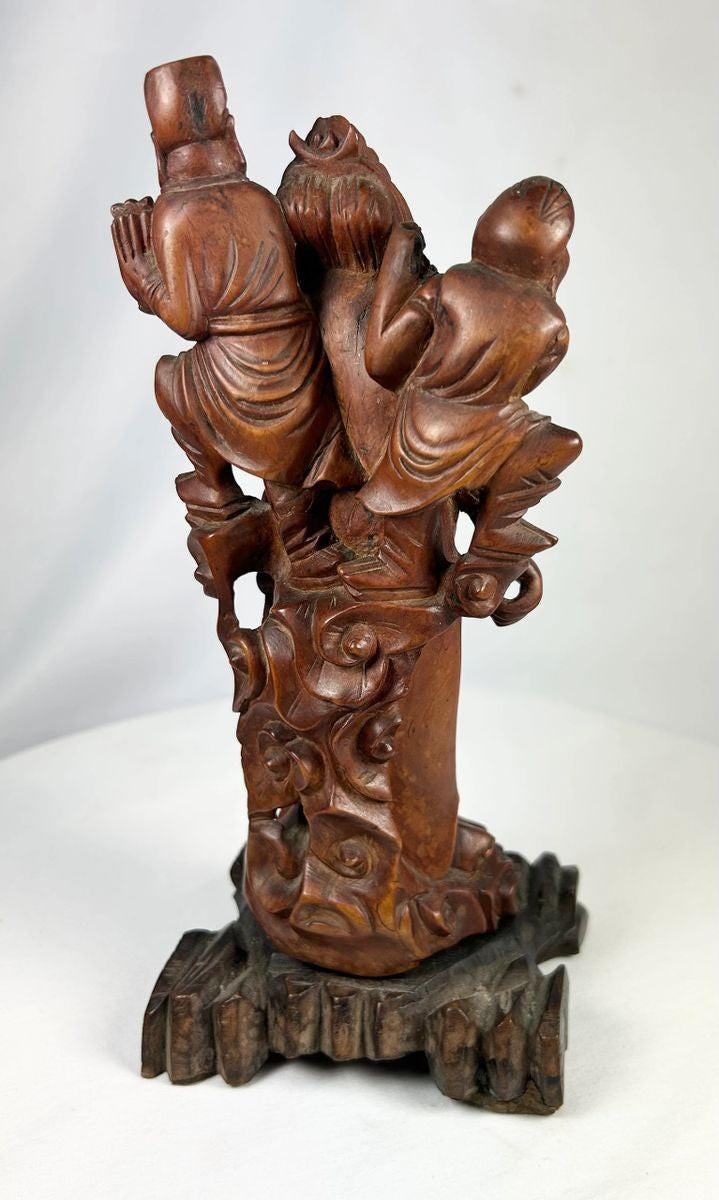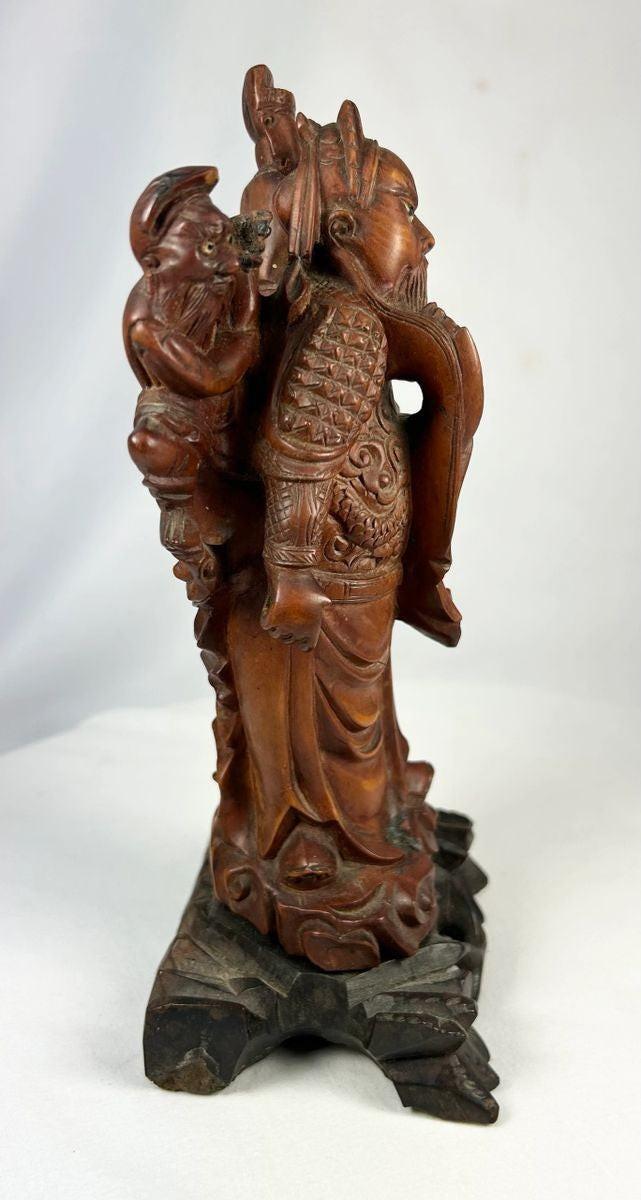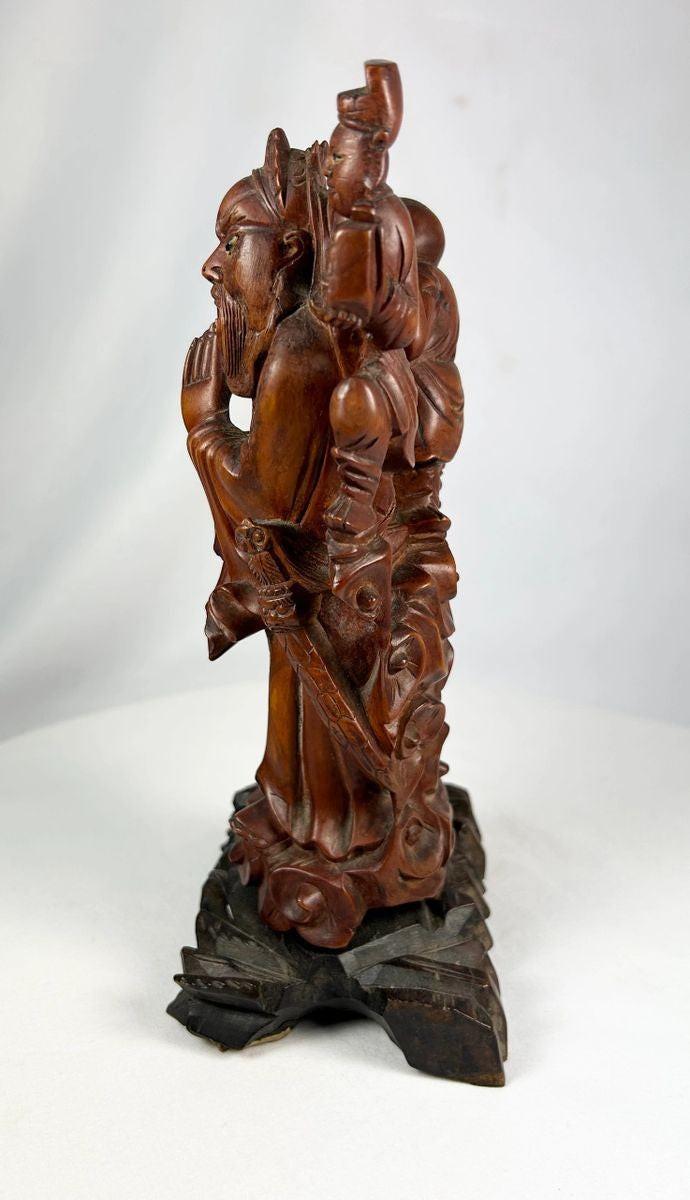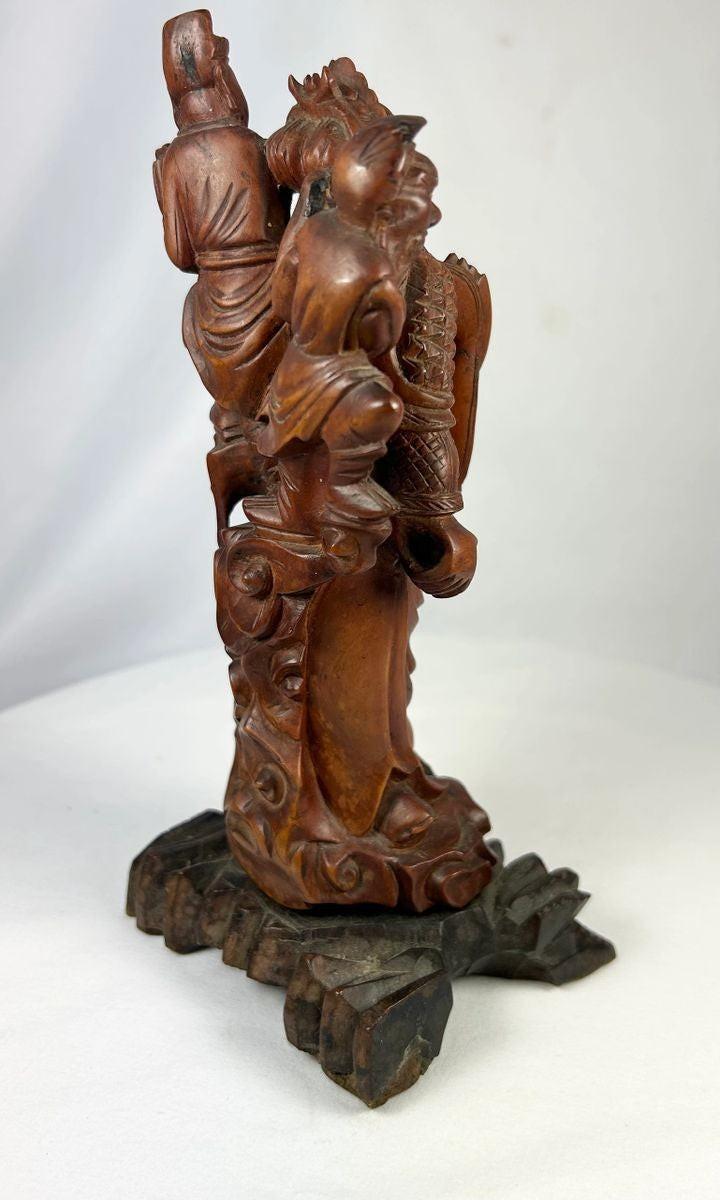Late Qing Dynasty Chinese Hardwood Sculpture | Daoist Immortal with Attendants | Circa 1880–1910
Description
More
Less
Historical Context & Origin
Region: China
Material: Hardwood (likely boxwood or similar dense Chinese wood)
Period: Late Qing Dynasty, late 19th to early 20th century
Description
This finely hand-carved Chinese hardwood sculpture represents a Daoist immortal or warrior figure, executed with great attention to detail. The central figure is depicted with a fierce, commanding expression, clad in flowing robes and dragon-scale patterned armor—a motif often associated with strength, authority, and divine protection. Behind him, two attendants carry offerings, reinforcing the sculpture’s symbolic role as a guardian and bringer of blessings. The figure is further enhanced with inset eyes, possibly crafted from glass or semi-precious stones, which add a lifelike and dramatic quality. Mounted on a carved wooden base shaped like rocky terrain with wave motifs, the piece exudes presence and authority, making it a striking devotional or decorative artifact.
Features
- Masterful hand-carved details, including dragon-scale armor
- Expressive features typical of Chinese folk devotional art
- Two smaller attendant figures positioned behind the central immortal
- Inset eyes, adding depth and intensity
- Separate wooden base carved as rocky ground with stylized waves
Cultural Significance
Such sculptures were often placed on home altars or ancestral shrines during the late Qing Dynasty. Serving both protective and devotional functions, they symbolized prosperity, strength, and divine guardianship. The inclusion of attendants underscores its ceremonial purpose, emphasizing offerings and blessings. These carvings reflect the blending of folk artistry with Daoist religious iconography, embodying both craftsmanship and spiritual meaning.
Condition
The sculpture remains in very good antique condition. Natural age-related cracks and surface wear are present but stable, consistent with a piece of this age. The wood retains a rich patina that enhances its depth and authenticity. No evidence of modern restoration has been observed.
Dimensions (approximate)
Height: 8 in
Age
Estimated 100–150 years old, late 19th to early 20th century
Description
Historical Context & Origin
Region: China
Material: Hardwood (likely boxwood or similar dense Chinese wood)
Period: Late Qing Dynasty, late 19th to early 20th century
Description
This finely hand-carved Chinese hardwood sculpture represents a Daoist immortal or warrior figure, executed with great attention to detail. The central figure is depicted with a fierce, commanding expression, clad in flowing robes and dragon-scale patterned armor—a motif often associated with strength, authority, and divine protection. Behind him, two attendants carry offerings, reinforcing the sculpture’s symbolic role as a guardian and bringer of blessings. The figure is further enhanced with inset eyes, possibly crafted from glass or semi-precious stones, which add a lifelike and dramatic quality. Mounted on a carved wooden base shaped like rocky terrain with wave motifs, the piece exudes presence and authority, making it a striking devotional or decorative artifact.
Features
- Masterful hand-carved details, including dragon-scale armor
- Expressive features typical of Chinese folk devotional art
- Two smaller attendant figures positioned behind the central immortal
- Inset eyes, adding depth and intensity
- Separate wooden base carved as rocky ground with stylized waves
Cultural Significance
Such sculptures were often placed on home altars or ancestral shrines during the late Qing Dynasty. Serving both protective and devotional functions, they symbolized prosperity, strength, and divine guardianship. The inclusion of attendants underscores its ceremonial purpose, emphasizing offerings and blessings. These carvings reflect the blending of folk artistry with Daoist religious iconography, embodying both craftsmanship and spiritual meaning.
Condition
The sculpture remains in very good antique condition. Natural age-related cracks and surface wear are present but stable, consistent with a piece of this age. The wood retains a rich patina that enhances its depth and authenticity. No evidence of modern restoration has been observed.
Dimensions (approximate)
Height: 8 in
Age
Estimated 100–150 years old, late 19th to early 20th century
You May Also Like


























